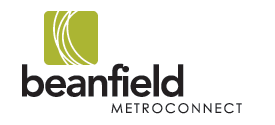
An artist rendering of Don River Park, part of the mixed-use spaces that hallmark the Toronto Waterfront revitalization project.
About seven years ago, Rochester’s Fast Ferry offered daily service between Rochester, N.Y. and Toronto’s Waterfront. Tens of millions of dollars later, the Rochester Ferry Company discovered that nobody in southern Ontario was that interested in a shortcut to Rochester, many locals found driving to Canada’s largest city faster, more convenient, and cheaper, and the point of arrival on the Canadian side was hardly a draw — situated in a rundown, seedy industrial wasteland.
By the end of 2006, the ferry was sold and sent on its way to Morocco, the CBC got a barely used International Marine Passenger Terminal (built for the Rochester ferry) to use as a set location for its TV crime drama The Border, and the rundown waterfront was well-embarked on a major reconstruction effort.
This week, Toronto’s Waterfront learned it was getting a broadband makeover as well, with the forthcoming launch of insanely fast 10/10Gbps fiber broadband for business and 100/100Mbps for condo dwellers along the East Bayfront and West Don Lands.
Best of all, Beanfield Metroconnect, the parent company responsible for constructing the network, promises no Internet Overcharging schemes for residents and businesses… forever. No usage caps, no throttled broadband speeds, no overlimit fees. Pricing is more than attractive — it’s downright cheap for Toronto: $60 a month for unlimited 100/100Mbps broadband, $30 a month for television service, and as low as $14.95 for phone service. Bundle all three and knock another 15 percent off the price. The provider is even throwing in free Wi-Fi, which promises to be ubiquitous across the Waterfront.
The project will leapfrog this Toronto neighborhood into one of the fastest broadband communities in the world.
“Having this sort of capacity available to residents will allow for a whole new world of applications we haven’t even conceived of yet,” said chief executive Dan Armstrong.
 The rest of Toronto, in comparison, will be stuck in a broadband swamp courtesy of Rogers Cable and Bell, where average speeds hover around 5Mbps, with nasty usage caps and overlimit fee schemes from both providers. DSL service in the city is notoriously slow and expensive, as Bell milks decades-old copper wire infrastructure long in need of replacement.
The rest of Toronto, in comparison, will be stuck in a broadband swamp courtesy of Rogers Cable and Bell, where average speeds hover around 5Mbps, with nasty usage caps and overlimit fee schemes from both providers. DSL service in the city is notoriously slow and expensive, as Bell milks decades-old copper wire infrastructure long in need of replacement.
The public-private broadband project is a welcome addition for an urban renewal effort that has been criticized at times for overspending. Created in 2001, Waterfront Toronto has a 25-year mandate to transform 800 hectares (2,000 acres) of brownfield lands on the waterfront into a combination of business and residential mixed-use communities and public spaces. At least $30 billion in taxpayer funds have been earmarked for the renewal project, although project managers say no taxpayer dollars will be spent on the broadband project.
Waterfront Toronto’s efforts have been recognized as bringing Toronto’s first “Intelligent Community” to the city with the construction of the open access fiber network.
 Still, the public corporation has its critics. Earlier this spring Toronto city councilman Doug Ford called the urban renewal project a boondoggle. Other conflicts rage with the Toronto Transit Commission and the mayor’s office over other redevelopment projects. But the revitalization project’s broadband initiative has significant support, especially among knowledge workers that could eventually become residents… and paying customers.
Still, the public corporation has its critics. Earlier this spring Toronto city councilman Doug Ford called the urban renewal project a boondoggle. Other conflicts rage with the Toronto Transit Commission and the mayor’s office over other redevelopment projects. But the revitalization project’s broadband initiative has significant support, especially among knowledge workers that could eventually become residents… and paying customers.
The 21st century broadband project is also likely to bring broadband envy across the entire GTA, who will wonder why service from the cable and phone companies is so much slower and more expensive.
For broadband enthusiasts, Toronto’s broadband future looks much brighter than yesterday’s failed ferry service, which proves once again that regardless of the technology — slow, expensive, and inconvenient service will never attract much interest from the value-conscious public.
[flv width=”640″ height=”380″]http://www.phillipdampier.com/video/TVO The Need for High Speed 5-2010.flv[/flv]
Canada’s digital networks are some of the slowest in the world, running between one hundred to a thousand times slower than other countries in the developed world. In this episode of “Our Digital Future – The Need for High-Speed,” Bill Hutchison, Executive Director of Intelligent Communities for Waterfront Toronto describes the sorry state of Canada’s digital infrastructure, stressing the need for major investments in advanced broadband networks. (4 minutes)


 Subscribe
Subscribe

Okay, but regarding Bell, will there be a replacement for copper phones? For example, will the phone work for emergency calls to 911 or when the power goes out at home?
If i’m not mistaken, DSL is limited to 25 Mbps and cannot go any higher.
I believe it can if it is like what AT&T Uverse has in the US, fiber/copper hybrid system. When I had Uverse, they piped in a 30/5 line to my house. The Internet was allocated up to 24Mbps of that 30 and 3Mbps out of 5 for upstream. The rest of that bandwidth goes towards IPTV and phone services. When my modem sync’d, it showed my line was capable of supporting 44Mbps and I have heard of people actually getting a little over 50Mbps but they have yet to offer anything higher than 24Mbps.
https://en.wikipedia.org/wiki/Very_high_speed_digital_subscriber_line_2
DSL may not be pulling in any throughput records but the copper wires it uses certainly isn’t slowing it down. It may not be as fast as fiber but we’ve been using copper for a long time and we’ve done upgrades to infrastructure that allows us to push more and more bits through copper every day. It is the same thing we do with fiber. We keep on adding more signals to fiber and every new signal we had allows us to push more data through a single line. We’ve done virtually the same thing with copper lines, it’s only… Read more »
DSL is NOT broadband or high speed. DSL is the equivalent of trying to outrace the Space Shuttle with a mule. Fiber to the device is the only way forward for everyone.
Nowhere did I claim DSL is broadband or the future, just merely stating the facts that Bell is “loonie” and “toonieing” us. The fact is the paltry service offered by Bell is ancient DSL service and shouldn’t be a representation of DSL. Fiber may be the future, but I doubt Bell is going to give you any of that future when they won’t even upgrade their DSL infrastructure. Fiber is great for tomorrow – but today the fact is that Bell offers inadequate DSL service. Is it because it wasn’t upgraded properly? Maybe they want to artificially restrict internet access?… Read more »
DSL isn’t the solution, it’s part of the problem. The distance limits and reduced and line quality issues for most customers make it impractical.
Telco’s need to be working on FTTH now, not in 10 years, they’re already years behind the competition with Cable Co’s and seem quite content to play the same game of minimal investment while they charge a premium for service below that of the competition.
I agree. One need only look at Rochester, N.Y., Frontier Communications’ largest service area. They won’t spend on anything beyond DSL and their network has deteriorated for years. I live in one of the area’s wealthiest suburbs, yet Frontier delivers this area only 3.1Mbps DSL service. Guess how many broadband and phone customers they have here? When Time Warner Cable delivers three times faster service for less money than the phone company charges, and can provide a respectable phone service as well, what possible reason would you keep doing business with Frontier? More customers ask that question every day. Frontier… Read more »
There is indeed some life still in copper wire phone lines, if you extend fiber out into neighborhoods to reduce the amount of copper between your home and the phone company. DSL bonding is probably the cheapest — combining multiple DSL lines to build a bigger pipe. ADSL2/2+ and VDSL can also get speeds comfortably into the 25Mbps range, but upload speed will likely not match that, and there are diminishing returns as you strive for higher and higher speeds. Right now, Bell is following in AT&T’s footsteps. Bell has Fibe TV and AT&T has U-verse. Both are trying to… Read more »
Have any of you read Philip’s recent article on Sonic.net DSL service? They combine copper-wired phone and.unlimited 20Mbps Internet service for only $40/month! Soon they will offer copper packages as an option, but for now, it shows that Bell Canada & reseller Primus are both guilty of excessive price gouging. 🙁